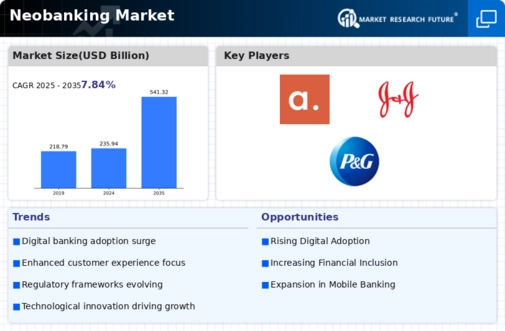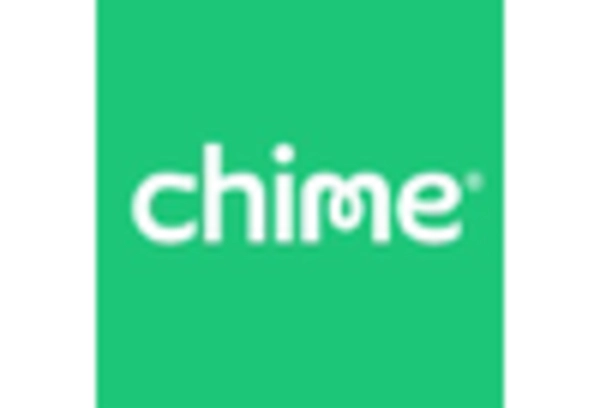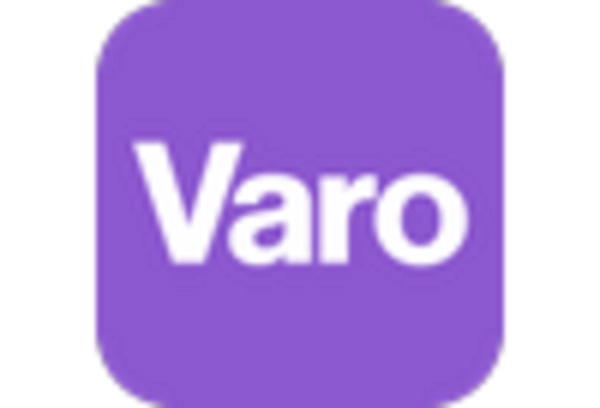Market Share
Introduction: Navigating the Future of Neobanking: Competitive Dynamics and Strategic Insights
The new banking is undergoing a profound change. It is the result of the rapid development of technology, the changing regulatory framework, and the ever-increasing demand for a completely digital experience. It is a field where fintechs, traditional banks turning to a digital-first strategy, and technology companies specializing in data analysis and automation are establishing their presence. The fintechs are using advanced biometric and IoT solutions to increase security and customer engagement. The traditional banks are investing in green solutions to appeal to the environment-conscious consumers. Competition is intensifying, but new opportunities are opening up in the regions, especially in Asia-Pacific and Latin America, where the penetration of digital banking is still low. The strategic deployment of new technologies will be crucial for the vendors seeking to capture market share and establish their leadership in this dynamic environment. It is therefore important for the C-levels to understand the changing competitive environment.
Competitive Positioning
Full-Suite Integrators
These vendors offer comprehensive banking solutions, integrating multiple services into a single platform.
| Vendor | Competitive Edge | Solution Focus | Regional Focus |
|---|---|---|---|
| Revolut Ltd. | All-in-one financial services platform | Digital banking and financial services | Global |
| N26 | User-friendly mobile banking experience | Mobile banking solutions | Europe and U.S. |
| Monzo Bank Limited | Real-time banking insights | Mobile banking and budgeting tools | UK and Europe |
Specialized Technology Vendors
These players focus on niche banking technologies, enhancing specific banking functionalities.
| Vendor | Competitive Edge | Solution Focus | Regional Focus |
|---|---|---|---|
| Simple Finance Technology Corporation | Innovative budgeting tools | Personal finance management | U.S. |
| Movencorp Inc. | Focus on financial wellness | Mobile banking and financial education | U.S. |
Regional Neobanks
These vendors primarily serve specific regional markets, tailoring their offerings to local needs.
| Vendor | Competitive Edge | Solution Focus | Regional Focus |
|---|---|---|---|
| Atom Bank PLC | UK's first app-based bank | Savings and loans | UK |
| Fidor Bank Ag | Community-driven banking model | Digital banking services | Germany and Europe |
| Ubank Limited | Focus on Australian market | Digital banking solutions | Australia |
| Webank, Inc. | Strong integration with e-commerce | Digital banking and payments | China |
| Mybank | AI-driven credit assessment | Digital banking and loans | China |
Emerging Players & Regional Champions
- Chime (USA): Free banking services, with early direct deposit and savings automation. Challenges the old banks by attracting young people with a friendly app.
- N26 (Europe): N26 is a European bank that specializes in mobile banking with features such as real-time notifications of transactions and budgeting tools. In 2023, N26 was expanding its services to a number of European countries, making it a strong competitor to the region's legacy banks.
- The services offered are: - Multi-currency accounts, - Cryptocurrency trading, - Stocks trading. Business accounts have been launched, which have been well received by small and medium-sized enterprises (SME). With lower charges and innovative financial products, they are threatening to take the place of banks.
- ZETA (India): Provides banking-as-a-service to fintechs and new banks. It has recently signed up a number of fintechs, enabling them to quickly launch banking products. This complements the fintech industry, while also putting pressure on traditional banks.
- “Kuda” is a digital bank in Nigeria that offers free banking services and financial management tools. It has recently raised significant funds to develop its services and has now positioned itself as a regional champion in the fast-growing African neobanking sector.
Regional Trends: In 2025, neobanking has become a well-established system in many regions of the world, particularly in North America, Europe, and Africa. The trend is characterized by a growing preference for mobile banking, with an emphasis on the customer experience and low-cost services. The development of specialized technology, such as AI-based customer service, individualized financial management tools, and the integration of e-commerce platforms, has enabled neobanks to effectively target niche markets.
Collaborations & M&A Movements
- Chime and Visa entered a partnership to enhance digital payment solutions for Chime's users, aiming to increase market penetration in the competitive neobanking sector.
- Revolut acquired the fintech startup, TransferWise, to expand its international money transfer capabilities and strengthen its position against traditional banks.
- N26 and Stripe collaborated to streamline payment processing for N26's European customers, enhancing user experience and operational efficiency in a highly regulated market.
Competitive Summary Table
| Capability | Leading Players | Remarks |
|---|---|---|
| Biometric Self-Boarding | N26, Chime | N26 has implemented facial recognition technology for seamless onboarding, enhancing user experience. Chime has adopted fingerprint scanning, which has shown a 30% increase in user sign-ups due to its ease of use. |
| AI-Powered Ops Mgmt | Revolut, Monzo | Revolut utilizes AI for real-time fraud detection, reducing fraudulent transactions by 40%. Monzo's AI-driven customer service chatbots have improved response times by 50%, showcasing operational efficiency. |
| Border Control | TransferWise, N26 | TransferWise offers multi-currency accounts that facilitate cross-border transactions with minimal fees, appealing to international users. N26 has integrated compliance checks that streamline border control processes for users traveling abroad. |
| Sustainability | Aspiration, Green Dot | Aspiration promotes eco-friendly banking by allowing users to track their carbon footprint. Green Dot has launched initiatives to support sustainable businesses, attracting environmentally conscious consumers. |
| Passenger Experience | Revolut, Chime | Revolut's user-friendly app interface and personalized financial insights enhance customer engagement. Chime's no-fee structure and automatic savings features have significantly improved user satisfaction ratings. |
Conclusion: Navigating Neobanking's Competitive Landscape
In the approach of the year 2025, the banking sector is characterised by a high degree of competition and market fragmentation, a legacy of the old banking institutions and the new fintechs. The tendency towards local services, which are gaining in importance, is influencing the suppliers to offer a product adapted to the needs of the local market. In this, the old banking institutions are able to draw on their long-standing customer base and their regulatory knowledge, while the new entrants are able to focus on innovation and customer-centric solutions. However, the ability to utilise the potential of the available resources, such as artificial intelligence for personal banking services, automation for efficient operations, sustainability for ethical banking practices, and flexibility for adapting to the needs of the individual customer, will be decisive for market leadership. The suppliers will have to strategically position themselves to be able to take advantage of these trends and to be agile and responsive in the rapidly changing environment.

















Leave a Comment